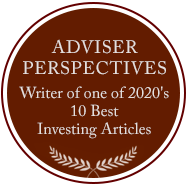
Categories
Resource Links
 GIR's Investing in the New Europe
GIR's Investing in the New EuropeBloomberg Press, 2001, "Sound, practical advice."
Wall Street Journal Europe
Resilience Of Global Macro
9 July 2009, Financial Times Fund Management
Is it easier to predict where Vodafone is heading over the next 6 to 12 months or what the Bank of England may do with interest rates? The performance of individual securities is based not only on earning trends and outlook, but on mercurial investor sentiment toward the related industry, the market as a whole, perception of risk, along with current returns of risk-free investments. Anticipating what Mervyn King was going to do when interest rates were five percent and the British economy was rapidly slowing into recession, however, was a much easier call to make.
That’s the appeal of global macro. It’s by no means a guaranteed strategy. Markets are inherently volatile and these days government intervention can throw in a monkey wrench that can reverse ostensibly strong trends. But investors can think of it this way: from where to get a clearer view–on the ground or from 30,000 feet above?
Global macro investing is informed by much broader and slower-moving trends than those that affect individual securities, such as economic growth rates, inflation, commodity prices, and exchange rates. Global market strategists search for investment trends across dozens of markets worldwide, including stocks, bonds, commodities, interest rates and currencies. They can go short or long, stack up various positions in different asset classes they believe will pay off because of the sequential effects of a given trend, such as inflation or an overvalued market. And they can also establish counter positions to hedge portfolio risk.
As a result, global macro strategies have generated more consistent, profitable returns than virtually all other hedge fund strategies.
Over the trailing three-, five- and ten-year periods through May 2009, according to the US-based hedge fund tracking group BarclayHedge, global macro was among the top broad developed market strategies, with annualized returns of 5.50, 6.99 and 9.07 percent, respectively. The average hedge fund gained only 0.38, 4.84, and 8.54 percent, respectively over the same period. The S&P 500 was down -8.24, -1.9, and -1.71 percent annualized over the three periods. And the MSCI World Index lost 9.81, 1.43, and 1.99 percent annualized over the same time.
Though a hideous year, 2008 performance of global macro funds was second only to Short-Bias funds–off by just 65 basis points. BarclayHedge’s broad hedge fund index was off 21.63 percent, the S&P 500 lost 35.31 percent, and MSCI World Index declined 42.08 percent in dollar terms.
Global macro funds are run either discretionarily or systematically, and some managers combine both approaches. The former is driven by an investment thesis that informs a basket of trades. If a manager thinks interest rates are expected to rise, for example, he may go long the related currency and short domestic equities.
Systematic trading may inherently be guided by the same considerations. But this approach goes about investing in a thoroughly automated way, based on intricate algorithms based on years of historical performance that restrict input of manager sentiment and hunches. Computers monitor and interpret market trends. They ignore theories, only concerned with how markets are moving. And they make investment decisions based on short-, medium-, and longer-term time horizons.
“I don’t believe in efficient markets,” says Rob Friedl, co-founder of the Wisconsin-based Fall River Capital, with more than $200 million in assets under management. “Markets reflect human nature, and human nature is often wrong.”
He trades across seven distinct markets: Agricultural, Metals, Energy, Stock Indices, Short Rates and Bonds, and Currencies. This gives him access to more than 80 specific trades, ranging from unleaded fuel, wheat and zinc, to British gilts, Euribor rates, and the Hang Seng index. And because he can bet them either long or short, Friedl has the potential to perform well in any kind of market. “No one time is any more challenging another –so long as markets trend,” says Friedl.
He doesn’t care if OPEC is cutting oil production or who wins an election. His transactions are focused exclusively on when the price of a commodity, currency, or an index breaks out of a trading range. He’ll be long if it’s going up, short if it’s heading lower. And when the trend breaks down, he’ll get out of the trade.
Since inception in August 2000, his fund has generated annualized returns of 16.17 percent though June 2009. In stark contrast, the S&P 500 was down -3.08 percent over the same period.
Roy Niederhoffer refines the systematic approach, using ultra-short trades to profit from volatility. Last year the R. G. Niederhoffer Capital Management Diversified Program, with $560 million in assets, was up 51 percent. Since inception in 1993 through June 2009, his average annualized return was 11.1 percent. But the historically strong trends of this year’s first and second quarter has revealed the one scenario in which he can’t excel. Year-to-date through June, he is down -1.19 percent.
Like Friedl, Niederhoffer ignores company fundamentals and macroeconomic trends. The neuroscience-educated fund manager has created computer models that focus on
short-term investment biases hard-wired into the human mind. He explains: “Investors overemphasize recent experience when making decisions; people hate to lose more than they love to win; investors become more predictable as markets become more volatile; and when they are emotional, investors tend to be herd-like in behavior. That last tendency leads to selling when stocks are near a bottom, and buying when rallies are overextended.”
Niederhoffer capitalizes on the predictability of these response patterns by targeting quick gains. His Diversified Program makes thousands of trades a year, ranging in duration from several hours to a week, and occasionally longer. Being right just a little more than half the time is all he needs to generate large profits.
Defining the discretionary approach, David Gerstenhaber, manager of the Argonaut Aggressive Global Partnership Fund with $430 million, studies macroeconomic data, central-bank policies, and government and market data that’s maintained in a real-time global proprietary economic database. But unlike some other global macro-fund managers, he also drills down into individual market behavior, searching for value that isn’t fully reflected in market prices.
“If we don’t have a strong conviction about interest rates or the trend of the
S&P 500,” says Gerstenhaber, “we will then look at the performance of the oil or aluminum markets to find a more compelling investment,” he says. And he has no problem bulking up in cash if his team of 10 researchers can’t come up with enough strong ideas.
Gerstenhaber’s approach has produced gains every year since the fund opened in 2000, generating annualized returns of 17.6 percent through May 2009. Last year he was up 12.3 percent. Through the first five months of this year, his fund is up nearly 1 percent. The fund’s senior economist, Daniel Schwartz thinks that the fund’s modest performance so far this year comes down to this: “if you didn’t believe in the stock market rally, it was hard to buy into the dollar sell-off, the oil rally, or the bond sell-off as well because they all temporarily became highly correlated trades.”
But investors shouldn’t misinterpret the lackluster year global macro is having so far this year. Recent big gains of the above managers aside, global macro is not a strategy that gambles on making big killings. That’s why, to its credit, it didn’t get hit from extreme market moves.
“Short-term whipsawing conditions with low directional volatility have been challenging this year,” explains Aref Karim, who runs the Quality Capital Management’s $666 million Global Diversified Programme, which has generated annualized returns since 1995 of 15.82% percent. In 2008, he was up 60 percent. “We best profit,” says Karim, “from longer-term, sustainable macro trends in which we have a higher degree of conviction.”
Tags: Argonaut, Balestra Capital, Barnegat Fund, Closed-end funds, Commodity Trading Advisors, Finisterre, Global macro, Hedge funds, mutual funds, Partners, Risk management, Xerion Fund
This entry was posted on Thursday, July 9th, 2009 at 9:00 pm and is filed under FUNDS. You can follow any responses to this entry through the RSS 2.0 feed. You can leave a response, or trackback from your own site.
Leave a Reply
Search
Opalesque Interview of Eric Uhlfelder





